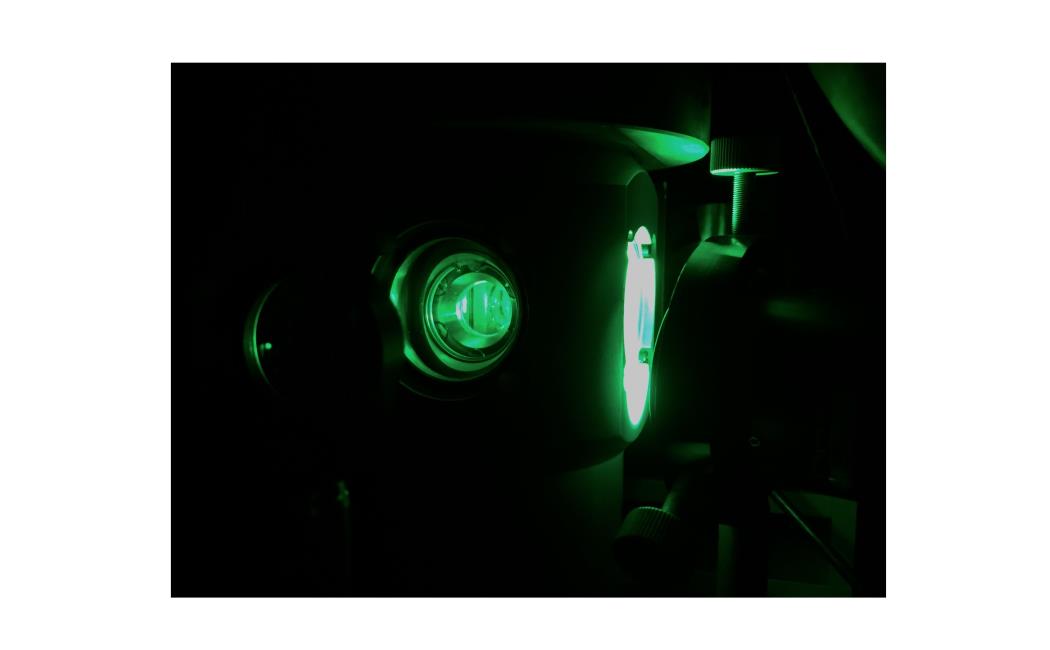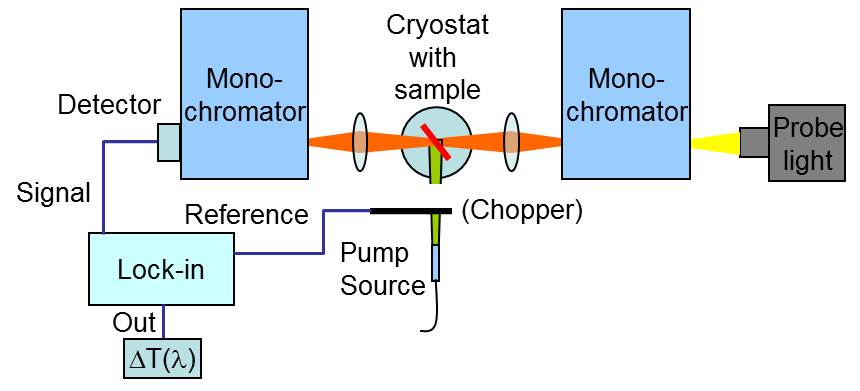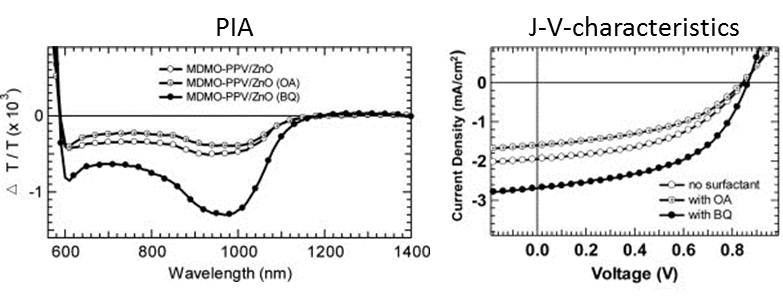
Quasi steady-state PIA
In this method the excitation is realized using a cw-laser or LED, which is modulated by a mechanical chopper. The sample is additionally illuminated by a monochromated light beam (“probe-light”) of a white light source. The sample’s absorption is measured in a reflective or transmittive manner at different wavelengths. Behind the sample the light is sent through another monochromator in order to suppress any false signals due to photoluminescence. The measured signal is analyzed with a lock-in amplifier using the chopper frequency as the reference signal, allowing a very precise quantification of the change in absorption induced by the pump-light. Observing the change in absorption for different wavelengths, long-lived excited species like charges or triplets can be identified. Using various detectors (Si, Ge, InSb) a broad wavelength region ranging from 400nm up to 4500nm can be analysed. Varying the material composition, material dependent effects can be characterized. Temperature and pump-light intensity dependencies can be studied as well. Even a time resolution of the absorption in the micro- to millisecond range can be achieved by varying the chopper frequency, in order to determine e.g. time constants of decay processes.

© Group Laquai
Application
We use the quasi steady-state PIA in our workgroup to study materials used for organic electronics. We investigate for example polymer-fullerene blends employed in organic bulk-heterojunction solar cells and chromophores on metal oxides used in dye-sensitized solar cells. One of the main goals is to assign spectral signatures of charges and triplets, being a guide to the interesting wavelength range in a later transient absorption experiment and helping its interpretation. [1,2] Comparing signal strengths, it is possible to deduce the relative charge generation efficiencies. This was for example done in a study of a hybrid solar cell system of ZnO nanoparticles blended with a polymer. A modification of the surfactant of the ZnO particles led to the generation of more charges accompanied with an increase in efficiency. [3] Additionally, it is possible to study the regeneration of a dye in dye-sensitized solar cells quite easily with quasi steady-state PIA.
